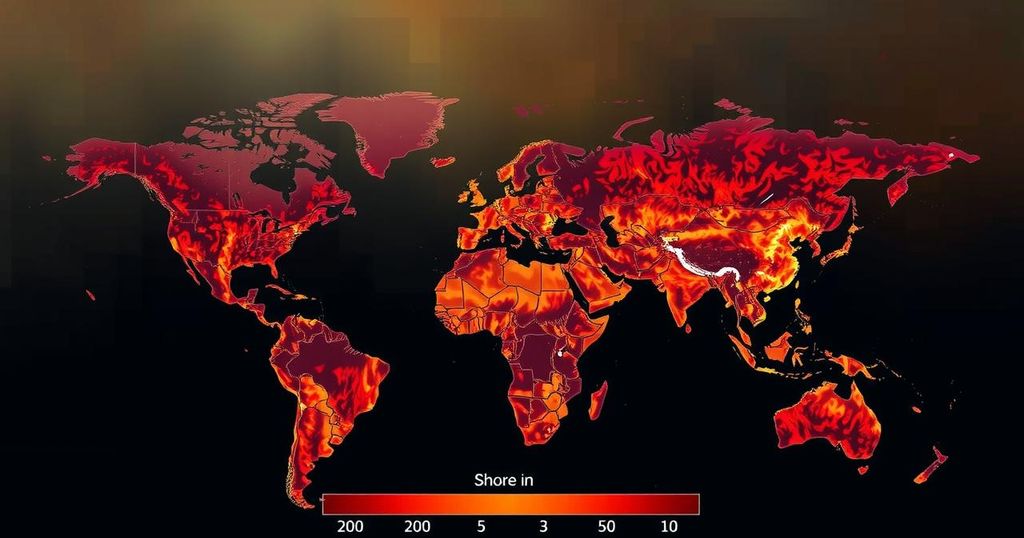Research linking climate change to the rise in wildfires reveals a substantial increase in smoke-related fatalities, escalating from 669 annual deaths in the 1960s to 12,566 in the 2010s. Different regional trends indicate that while some areas experience declining wildfire incidents, others, particularly California and Siberia, suffer increased occurrences due to climatic factors. The studies emphasize the necessity for sustained emission reductions and effective surface management to combat the worsening wildfire crisis.
Recent research underscores the profound impact of climate change on the rise of wildfires globally, as well as its associated health consequences, primarily smoke-related fatalities. Two studies conducted by a consortium of researchers from Dalhousie University, Belgium, the United Kingdom, and Japan, reveal a significant correlation between escalating wildfire occurrences and climate change, noting a drastic increase in smoke-related deaths from approximately 669 per year in the 1960s to a staggering 12,566 annually by the 2010s. The first study, published in Nature Climate Change, highlighted the stark differences in wildfire patterns across regions. While Africa saw a notable decrease in wildfires attributed to increased human activities and landscape fragmentation, regions such as California and Siberia experienced a surge in wildfires driven by prolonged droughts and elevated temperatures linked to climate change. Dr. Sian Kou-Giesbrecht, an associate professor at Dalhousie University and a co-author of both studies, emphasizes the urgency of addressing the consequences of wildfires: “The study is important because it shows and quantifies the influence of climate change on increasing wildfires worldwide, especially given the impacts of wildfire on society and its feedback to climate change.” The research suggests that although human interventions like fire suppression can mitigate some wildfire impacts, the influence of climate change often overwhelms these efforts during severe fire years. Seppe Lampe, a climate scientist involved in the study, remarked, “What is striking is that in periods with low to moderate numbers of fires, direct human interventions have a large effect. However, in periods with many fires, the effect of climate change dominates, meaning that in these cases we lose control.” Additionally, the second study revealed that climate change has significantly contributed to the increase in wildfire smoke-related deaths, estimating that 28 percent of such deaths in the 2010s can be attributed to climate change, compared to only one to three percent in the 1960s. The outcomes illustrate that if the current trajectory of climate change continues, both the extent of burned land and corresponding adverse health effects will exacerbate in the foreseeable future. Dr. Kou-Giesbrecht cautions that understanding these dynamics is vital for future planning and potential mitigatory measures.
The increasing prevalence of wildfires around the globe has been linked directly to climate change, as evidenced by the extensive research conducted in recent years. Understanding the dynamics between climate variability, human interventions, and wildfire frequency is crucial to addressing the health impacts associated with smoke emissions. The studies conducted by an international team illustrate a range of consequences stemming from these fires, particularly in sensitive ecosystems and regions prone to extreme weather events.
In conclusion, the research presents a compelling case for the relationship between climate change and increased wildfire incidence across various global regions. It is imperative to recognize that while human interventions can offer some respite, they often fall short in countering the overarching effects of climate change. Immediate actions aimed at reducing greenhouse gas emissions, alongside effective landscape management strategies, are essential to mitigate future wildfire impacts and protect public health.
Original Source: www.dal.ca






